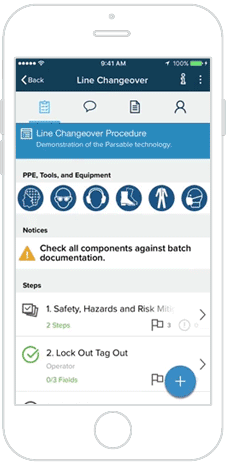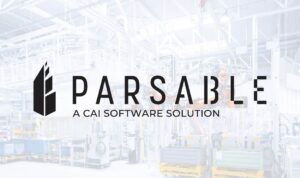What are Manufacturing Work Instructions?
Manufacturing work instructions are important documented processes that help workers consistently create, assemble, package, and ship products. Good manufacturing work instructions can help streamline the production process to support lean manufacturing. At the same time, quality instructions promote a safe working environment and help eliminate waste.
- Types of Manufacturing Work Instructions
- Components of Manufacturing Work Instructions
- Advantages of Using Clear Manufacturing Work Instructions
- Common Manufacturing Work Instruction Formats
- Manufacturing Work Instruction Implementation and Usage
- Manufacturing Work Instructions with Connected Worker Software
Types of Manufacturing Work Instructions
Manufacturing work instructions vary depending on your operational needs. Types of work instructions may include the following.
Written Work Procedures
Written instructions in manufacturing can help workers perform specific tasks correctly. They often include step-by-step instructions, safety procedures, and relevant background material.
Although many companies still print written instructions, paper instructions can be difficult to navigate. For this reason, many companies have begun providing manufacturing instructions through digital programs or apps.
Visual Aids
Manufacturing instructions with visual aids use images, tables, charts, and graphics to clarify and illustrate directions. You can use pictures to show how things are made or add visuals to help with written instructions.
Interactive Digital Work Instructions

Often used for training purposes, interactive digital work instructions engage workers through software on computers or mobile apps right on the production line. Workers complete tasks by following the step-by-step interactive instructions on a mobile device or computer.
Components of Manufacturing Work Instructions
Every manufacturing facility has different operational requirements, so instructions vary widely. Generally, effective manufacturing work instructions should include the following information.
Sequential Steps and Processes
Detail the step-by-step process for the specific task. You may use a written list, incorporate graphics, or create an interactive program. Explain why the task is necessary and how it fits into the larger scope of the manufacturing process.
Safety Guidelines and Regulations
Incorporate all safety procedures and guidelines in your instructions. You can teach people how to use a safety device or guide workers on operating a machine safely. This section may also define appropriate personal protective equipment (PPE).
Quality Control
Explain how each step of the process contributes to the product’s overall quality. Create clear rules for the appearance, texture, and function of the finished product or part.
For example, if the worker applies a coat of paint to an auto part, you may ask them to check for paint color, shade, coverage, consistency, and imperfections.
Tool and Equipment Requirements
Outline the tools and equipment the worker will need to complete the task in full. Consider adding this information to the beginning of the instructions. That way, the worker can obtain everything they need before they begin the task.
Advantages of Using Clear Manufacturing Work Instructions

Manufacturing work instructions create clear expectations for worker behavior. They also ensure workers have the information they need to complete their regular tasks correctly. Some benefits of manufacturing work instructions include the following.
Process Standardization
With good work instructions, you can ensure that every worker handling a task completes the steps in the same order. Standardization ensures that all workers understand their tasks, thereby decreasing errors, reducing costs, eliminating waste, and improving productivity.
New Employee Training and Onboarding
Clear manufacturing instructions simplify employee onboarding and training processes. Consistency helps both trainers and new employees complete their training without overlooking critical details.
Consistency and Quality Assurance
When every worker operates from the same set of instructions, the company creates more consistent products overall. In addition, workers are less likely to miss steps or make mistakes when they all follow the same procedures.
Industry-Standard Compliance
Quality manufacturing work instructions can also protect your company from liability. Consistent worker requirements help ensure your manufacturing company meets industry standards for product quality and employee safety.
Common Manufacturing Work Instruction Formats
Manufacturing work instruction formats can vary depending on your operating methods. While paper-based instructions are still common in many sectors, software-based instructions are becoming more popular.
Paper-Based Instructions
Manufacturers sometimes find paper-based instructions to be useful because they can post them directly on the equipment. They may print a simple list of step-by-step directions or a more detailed list with images and graphics.
However, the more detail they add, the more cumbersome paper-based instructions become. Fumbling with pages and pages of paper while operating heavy machinery can severely compromise worker safety and product quality.
Digital Instructions
Thanks to advances in digital technology, workers can access manufacturing instructions via mobile devices from any location. Instead of going through lots of papers, workers can easily find the information they need using an interactive menu.
Customization and Adaptability
Digital manufacturing instructions offer a level of customization that’s not possible with instructions printed on paper. You can update and adapt your processes as necessary to optimize your operations. By not printing new instructions for each change, you save time, money, and keep your organization agile.
Manufacturing Work Instruction Implementation and Usage
Once you create good manufacturing work instructions, it’s time to establish a strategy for implementing and using them.
Integration Into Manufacturing Operations
To ensure operational consistency, begin by integrating the new instructions into your existing manufacturing operations. Ensure that your digital program meets your technical needs, such as compatibility and accessibility.
Revision and Update Control
Conduct as many revisions as necessary to ensure high quality, safety, and consistency in your manufacturing operations. Since digital work instructions allow you to make updates, you can revise the details in response to feedback and real-time data. Consult with your existing employees and other stakeholders to ensure you’re using the most effective instructions for your operation.
User Training and Adoption
Once you’ve customized your manufacturing instructions, you can roll out the program to your current and existing employees. Keep your training simple, clear, and consistent, and use interactive digital instructions to facilitate easy use. Digital work instructions enable employees to access training materials on their mobile devices. This allows them to quickly access instructions while working on the manufacturing floor.
Utilization Best Practices
Implementation involves defining, measuring, analyzing, and improving the process as you go. Fortunately, digital manufacturing instructions allow for continuous improvement. Over time, you can refine your work instructions until you achieve the most effective and intuitive iteration.
Streamline Your Manufacturing Operations With Parsable’s Connected Worker Solutions
Digital manufacturing work instructions help promote quality products and employee safety while maximizing productivity. Make sure your organization uses high-quality digital work instructions through Parsable’s Connected Worker® program. Parsable uses advanced tech to make interactive work instructions that employees can access on their mobiles from anywhere.
Parsable is a trusted leader in digital operational solutions for companies worldwide. Contact us today to learn how our state-of-the-art systems can improve your manufacturing operations.
Ready to revolutionize your operational workflows? Experience the power of Parsable’s Connected Worker® software firsthand. Schedule a demo today and discover how our solution can streamline your operations by digitizing your frontline.







